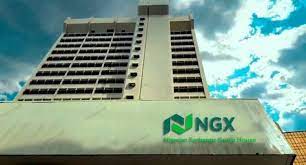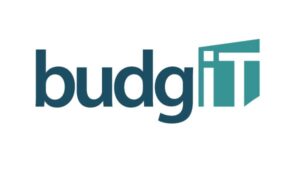Eight Nigerian Banks Record ₦156bn in Loan Loss Provisions Amid Economic Headwinds
Eight of Nigeria’s leading banks set aside a combined ₦156 billion in impairment charges on credit and financial assets during the first quarter of 2025, reflecting both the persistent pressures in the macroeconomic environment and varying risk management approaches across the sector.
According to an analysis of unaudited financial statements filed with the Nigerian Exchange Limited, the figure—often described as provisions for credit losses—represents funds allocated to cover potential defaults and the declining value of loans and investments. Although the aggregate amount marked a 5.2% decline compared to ₦164.53 billion in the same period of 2024, individual banks reported sharply divergent trends.
Zenith Bank posted the highest impairment charge, recording ₦49.38 billion as of March 31, 2025. This represented an 11.8% drop from ₦55.97 billion in the prior-year period, suggesting either improved loan recoveries or better asset quality. The bulk of the provisions arose from loans and advances (₦35.95 billion), followed by investment securities, treasury bills, and other assets. Despite the sizeable provisioning, Zenith reported a 20.7% increase in profit after tax, rising from ₦258.34 billion to ₦311.83 billion.
First HoldCo followed with ₦37.25 billion in impairment charges, down 11.2% from ₦41.93 billion a year earlier. Provisions mainly came from loans and advances to customers (₦41.23 billion), with smaller contributions from write-offs and reversals on other assets. However, profit after tax fell to ₦171.10 billion, compared to ₦208.11 billion in Q1 2024.
Access Holdings reported a net impairment charge of ₦21.77 billion, a 4.5% decrease from the prior year’s ₦22.79 billion. The improvement was attributed to lower provisions on investment securities and the absence of impairment write-backs on pledged assets. This, combined with cost controls and income growth, helped Access grow profit after tax by 14.7% to ₦182.75 billion.
Guaranty Trust Holding Company’s impairment charges remained nearly flat at ₦13.42 billion, just marginally below the ₦13.49 billion recorded a year earlier. Most of the provisions were related to Stage 3 loans considered credit-impaired. However, despite stable asset quality, the group’s profit after tax plunged by 43.6% to ₦258.03 billion, compared to ₦457.02 billion in Q1 2024.
United Bank for Africa reported a sharp increase in impairment charges, rising 332.2% to ₦14.18 billion from ₦3.28 billion a year ago. The spike was driven by higher allowances for credit losses on loans and provisions on investment securities and other assets. Nevertheless, UBA achieved a 33.1% growth in profit after tax, which rose from ₦142.58 billion to ₦189.84 billion.
FCMB recorded ₦9.52 billion in impairment charges, down significantly by 59.9% compared to ₦23.71 billion last year. The reduction was largely the result of recoveries on previously written-off loans totaling ₦4.11 billion. FCMB’s profit after tax increased to ₦32.23 billion, up from ₦28.77 billion in Q1 2024.
Fidelity Bank reported ₦8.66 billion in provisions, marking a steep 285.8% increase over ₦2.25 billion in the comparable period. The surge reflects broader asset write-downs, including depreciation and amortization combined with credit impairments.
Wema Bank’s impairment charges rose 64.7% to ₦1.82 billion, compared to ₦1.10 billion in Q1 2024, due to increased provisions on loans, investment securities, and other financial assets. The uptick reflects the bank’s expanding risk exposure as it grows its lending operations.
Overall, while the total impairment charges for the eight banks declined slightly year-on-year, the results underline the uneven impact of inflation, naira depreciation, and constrained liquidity on credit quality.
Analyst Perspective
Commenting on the trends, Charles Sanni, CEO of Cowry Treasurers Limited, noted that banks’ approaches to impairment charges often reveal their appetite for risk and the strength of their credit monitoring systems.
“Some banks are very aggressive in writing off non-performing loans—a strategy that is like biting the bullet,” he said.
Sanni added that lenders with lower non-performing loan ratios usually demonstrate stronger risk management. He explained that since interest rates began climbing in 2024, more proactive banks have been cautious about lending to sectors vulnerable to rate movements and economic volatility.
“Proactive banks are carefully reviewing borrowers’ leverage levels because highly leveraged clients are more exposed,” he noted.
He also pointed out that while early recoveries help limit impairment costs, each bank’s strategy differs. Some focus on securitizing loans or tightening risk controls, while others prioritize income growth even if it means carrying more bad loans on their books—a tactic he described as unsustainable in the long term.
On the broader outlook, Sanni observed that rising inflation has spurred higher loan volumes, particularly in sectors such as manufacturing and oil and gas, which require substantial working capital.
“Loan volumes have increased as a result of inflationary effects. As long as inflation persists, earnings growth will likely continue in these sectors,” he concluded.













Post Comment